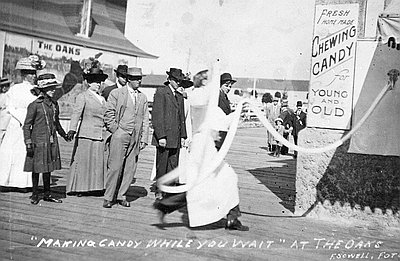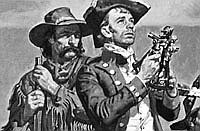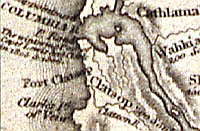Designing the Fairgrounds
The site of the Exposition covered 182 acres of land and 220 acres of stagnant water beyond the edge of development in Northwest Portland. The road to St. Helens (now U.S. 30) followed the edge of a low bluff that crossed the south end of the site. The remainder of the area consisted of marshes, market gardens, and a dairy farm. Although ownership was divided among dozens of parcels, the land was undeveloped and cheap to lease. The plans came from John Olmsted, stepson of Frederick Law Olmsted, the designer of New York’s Central Park. John Olmsted, who was himself a noted landscape architect in the family firm, was in Portland on a mission. In town to plan a city wide park system, he provided a basic plan for the fair for an additional $5,000 fee.
The formal layout imitated the “White City” of Chicago’s magnificent Columbian Exposition of 1893. The majority of the exhibition buildings overlooked the lake from the ridge where the Montgomery Ward (now Montgomery Park) building would later stand. A wide staircase led downslope to the lake, the amusements, and the U.S. government buildings on a peninsula in the middle of the lake. The buildings (which were cheaply made from lath and plaster and intended for quick demolition) were in the “Spanish Renaissance” style with domes, cupolas, arched doorways, and red roofs. The federal building looked like a cross between a railroad depot and a Mexican cathedral.
When they wanted a diversion from display cases and dioramas, fairgoershad plenty of choices. The management offered daily band concerts. There were balloon trips and movies in the National Cash Register Company pavilion (later moved to the St. Johns neighborhood in Portland). Visitors could patronize twelve restaurants, fifteen ice cream and soft drink stands, and seventy-six souvenir sellers. Along the Trail were novelties (the diving elk and Princess Trixie, the educated horse), scientific marvels (infant incubators), and replicas of exotic places (the Streets of Cairo, the Siberian Railway). The Carnival of Venice was the best show, but required a subsidy from the Exposition. Indeed, most of the Portland investors who backed the amusements lost money in the face of competing attractions like downtown theaters or the new Oaks Park.
© Carl Abbott, 2004. Updated and revised by OHP staff, 2014.
Sections
Related Historical Records
Program for Portland Day at the Fair
This Sept. 30, 1905, program is from “Portland Day” at the Lewis and Clark Centennial and American Pacific Exposition and Oriental Fair. Shown here are the middle pages …
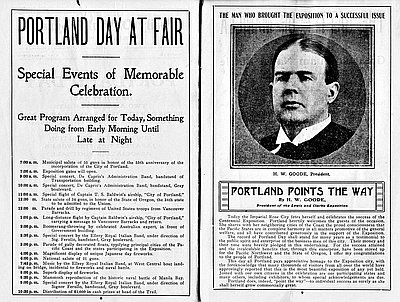
Portland Railway Company Car
This 1905 photograph shows a Portland Railway Company car at the NW 26th Avenue and NW Upshur Street entrance of the Lewis and Clark Exposition, which was open …
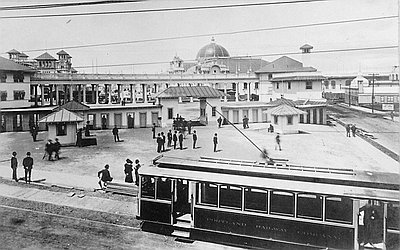
Pulling Taffy, Oaks Park, 1912
This photograph, taken by F. Sowell around 1912, shows Edward Klees pulling taffy at Oaks Amusement Park, one of the oldest continously operated amusement parks in the United …
